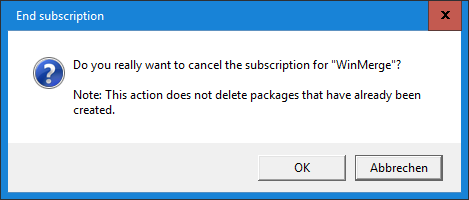Starting the Package Subscription Service UI
Starting the Package Subscription Service UI
The graphical configuration interface of the Package Subscription Service is designed in the style of the Windows 10 Settings app and allows you to configure the service, subscribe to applications and view and open the packages of subscribed applications that have already been created in a simple and intuitive way.
To start the GUI, use the "Package Subscription Service" link from the start menu or call the executable "PcupaSvc.exe" from the installation directory without any further parameters. The start page opens first, from which you can access the individual submenus.
Before you start viewing the available packages and subscribing to the applications you need, you should switch to the settings and check whether all settings and default values meet your requirements and boundary conditions. To do this, click on the "Settings" area on the start page.
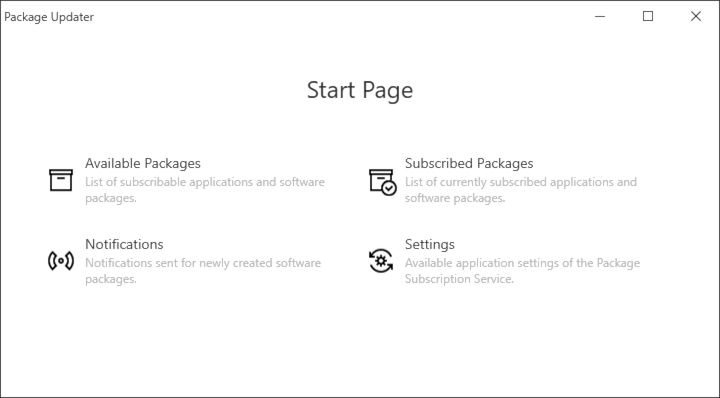
Available Packages
To view the list of packages that can be subscribed to, click on the "Available packages" button. You will then see a list of all packages contained in the Winget repository.
The list can be sorted alphabetically by name or in descending order by release date, so that you can always have the latest applications listed at the top. You can also filter the list by entering a search term in the "Filter by" field. Both the application name and the description are searched.
Under "Packages found:" you will see the number of packages found according to your filter. If no filter is specified, you will see the total number of packages available in the repository.
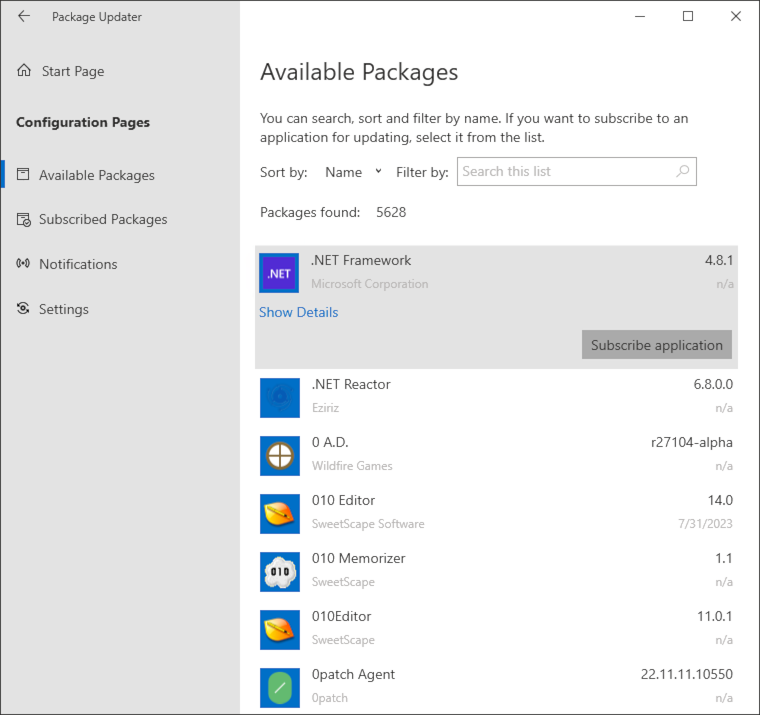
Package details
Once you have found an application, you can view its detailed information via the "Show Details" link. The information available in Winget on the manufacturer, name, version, summary, description, identifier and release date is displayed. You can copy this information to the clipboard using the "Copy" button. Use the 🡨 button in the title bar to return to the complete list.
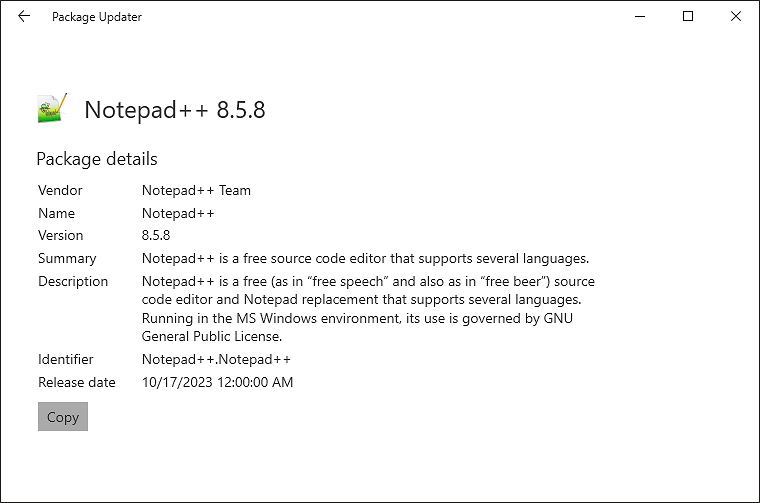
Subscribe application
Once you have found the right application that you would like to subscribe to, click on the "Subscribe application" button. You will then be taken to the detail window in which you can set the settings for subscribing to this package.
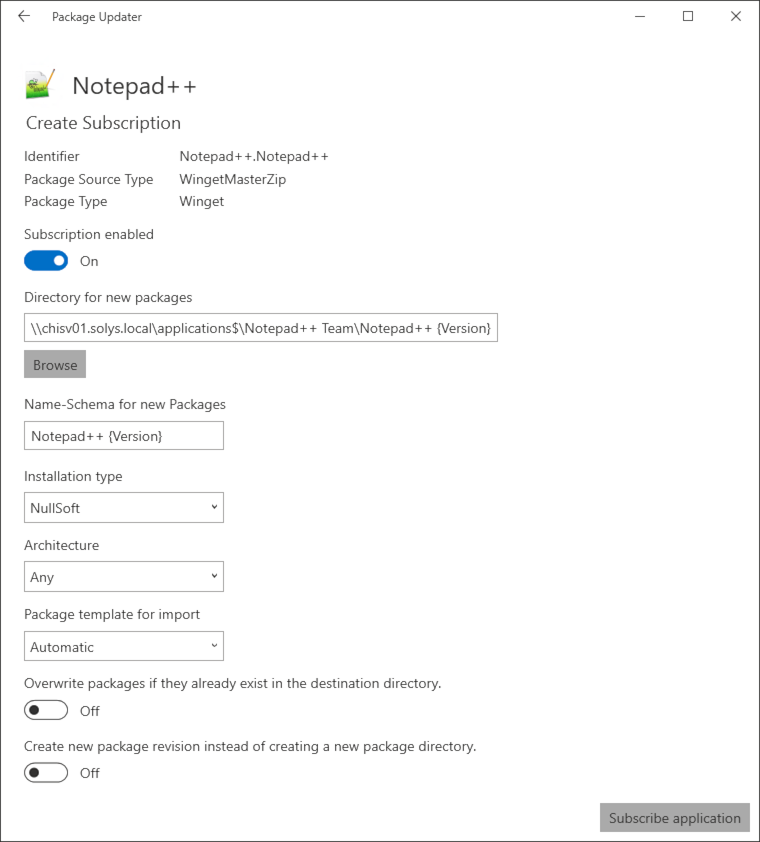
The following settings are available:
- Subscription enabled
Specify whether the subscription is active or paused. An inactive subscription is displayed in the list of subscribed packages with a pause symbol. - Directory for new packages
Specify the directory under which the new packages to be created for this subscription are to be created. The base directory from the configuration is used, supplemented by the naming scheme for newly created package directories. The variables {Vendor}, {Name} and {Version} can be used to create unique names. - Name-Schema for new Packages
Here too, the default for the naming of the generated packages is taken from the configuration, but can be individually adapted for this subscription. - Installation type
Different installer types are available for some applications, for example MSI and Inno-Setup. If necessary, select here which installation type the Package Subscription Service should use for automatic packaging. - Architecture
Depending on the application, the x86, x64 or arm64 platforms are available. Please select which version is to be packaged. If you leave the setting at the default value "Any", the first available architecture is automatically selected. - Package template for import
By default, the most suitable import template for the import according to the selected installation type is used via "Automatic". However, it is also possible to create custom Package templates, which you can then select here for this subscription. - Overwrite packages if they already exist in the destination directory
The default value from the global configuration is also used for this setting, but can be adjusted individually. As a rule, you will not use automatic overwriting, but you can explicitly activate it here if you wish. - Create new package revision instead of creating a new package directory
The default value from the global configuration is also used for this setting, but can be adjusted individually. This setting may be interesting or relevant for applications for which new versions are made available very frequently, such as Google Chrome or other browsers.
Once you have made all the settings according to your requirements and general conditions, you can create the subscription using the "Subscribe application" button.
Subscribed packages
If you click on the "Subscribed packages" button on the start page, you will see the list of packages you have already subscribed to. Inactive subscriptions are shown here with a pause symbol. To view or change the details of a subscription or to delete the subscription if necessary, select the relevant application in the list and then select the "Show details" link. Use the "Open package directory" button to open the package directory of the latest package version in the Explorer. Click on "End subscription" to delete the selected subscription.
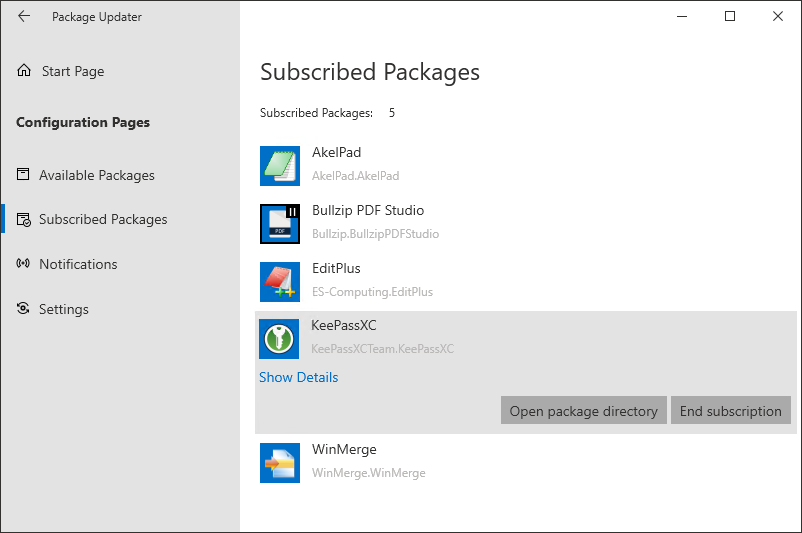
In addition to the subscription settings, you can also see in this view if the Package Subscription Service has already created one or more packages for the application. Below "Imported and updated packages", you can click on "Show packages" to display the existing packages.
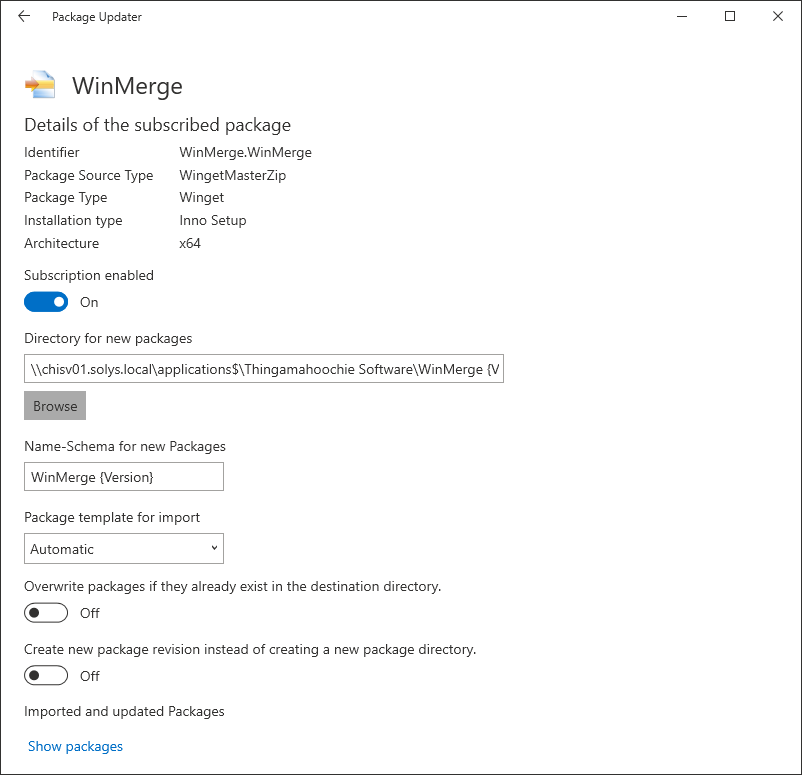
In this view, you can open the package directory of a specific package version directly in the Explorer using the "Open package directory" button. If the Packaging PowerBench GUI is also installed on the system, you can also open the package directly there via "Edit package". The link "Show only latest version" hides all package versions except the latest one, "Hide packages" is the opposite of "Show packages" described above and hides all packages again.
Delete subscriptions
If you want to end the subscription to an application, select the "End subscription" button in the subscription settings. You will then be informed in the following message box that this action will not delete packages that have already been created, but that no new packages will be created in future. If necessary, confirm this message to really end the subscription or cancel the action using the "Cancel" button.
